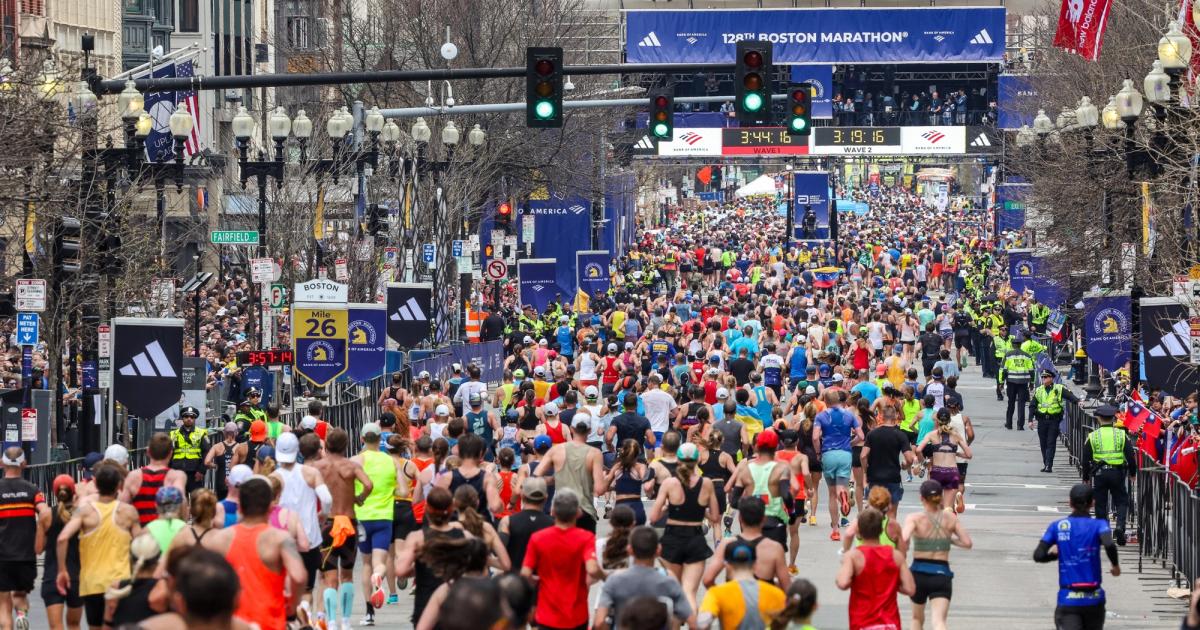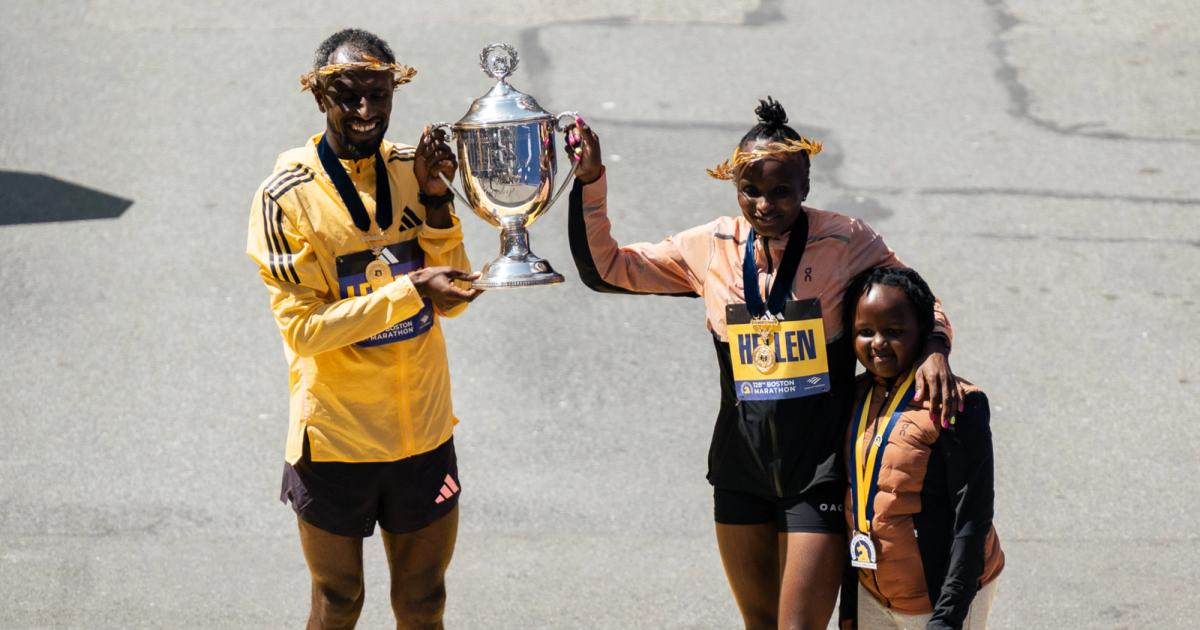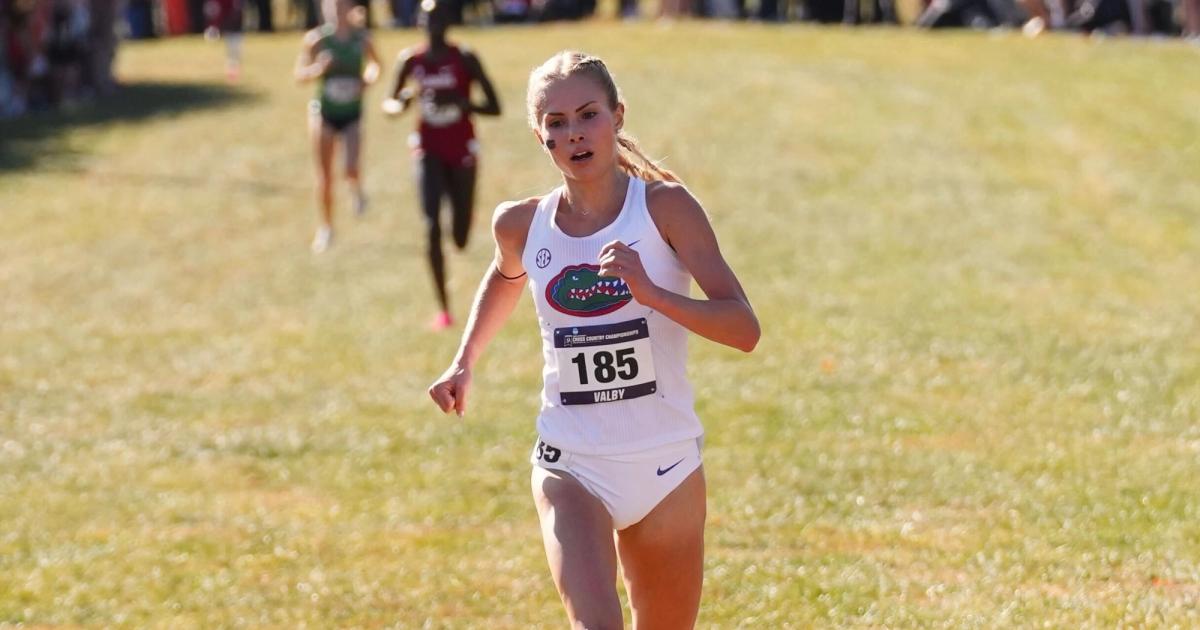By David Melly
September 18, 2024
When you’ve been around as long as the Boston Marathon has, you get used to receiving feedback: the good, bad, and ugly. And the Boston Athletic Association’s rollout of its new qualifying standards for the 2026 edition of the storied 26.2 mile race certainly generated… a large response.
The Boston Marathon sets a field size target at 30,000 participants and fills those fields with a mix of entrants who qualify by time and those who participate in charity fundraising programs. In recent years, roughly three-quarters of those 30,000 are selected via “BQ,” a series of times broken up by age and gender designed to produce a competitive but equitable group of participants. The race has had some version of a qualifying time since 1970, but it’s also grown unevenly in both size and competitiveness: the fastest qualifying marks, for example, were around in the 1980s but the race was roughly 25% its current size.
For the last five years, the BQ was 3:00:00 for men aged 18-34 and 3:30:00 for women 18-34. But that doesn’t mean that running 2:59:59 will automatically earn you a spot on the starting line in Hopkinton. More qualifiers applied than Boston had spots in eight of the last ten years, meaning the de facto cutoff was faster than the on-paper BQs in those years. The way Boston aims for fairness across categories is to rank everyone by how fast they run under each mark, so in 2024 when the adjusted cutoff was 5:29, the on-paper 3:00/3:30 became 2:54:31 and 3:24:31.
Beginning in the 2026 cycle (the qualifying window for which opened on September 1), runners aged 18-59 will have to target a time five minutes faster than the marks in place for the last six years. 60+ runners will have the same qualifying marks as before, but then again – they’re also getting BQs well into their senior years, so they deserve the break. The race will also have official non-binary qualifying marks for the first time.

The last time BAA moved up the qualifying mark by five minutes (in 2019), the cutoff the previous year was 4:52 under qualifying – so in practice, the mark only got 8 seconds faster. And the following year, the cutoff was 1:36 under the new mark anyways. BAA hasn’t released its registration cutoff for the upcoming 2025 race yet, but in 2024, the race set an all-time record for qualified applicants and 11,039 people were told to try again next year.
So although “BOSTON QUALIFIER GETS 5 MINUTES HARDER” is a headline that may generate a lot of emotional social media reactions from those on the cusp, it’s actually not doing much – if anything – to shift the actual time you need to run to get into the race. If anyone does get slightly screwed, it’s those at the faster end of the spectrum, simply because the cutoffs are evened out by time and not percentage. So a 20-year-old man looking to improve from 3:00 to 2:50 needs to knock 5.6% off his total time, but a 55-year-old woman only has to improve 4.1% to lose the same 10 minutes. Arguably, this change makes the overall population of Boston qualifiers more inclusive, as it makes qualifying harder for the youngest, speediest demographics.
This change isn’t really a move by the Boston Marathon to make its race more selective; it’s a recognition of how much faster and more competitive marathoners have gotten writ large. It’s a great sign for the overall health of the mass participation sport of running that more people than ever before are running faster than ever before. And while we haven’t had a ton of success historically in making casual runners diehard fans of pro running, having a large and semi-aware base of potential viewers/readers/consumers isn’t a bad place to start.
So before you vent your rage in a comment section or email inbox, consider that your personal passion about this issue may be inextricably linked with the very same factors making marathoning more popular. And then channel your feelings into your training for next year!

David Melly
David began contributing to CITIUS in 2018, and quickly cemented himself as an integral part of the team thanks to his quick wit, hot takes, undying love for the sport and willingness to get yelled at online.




